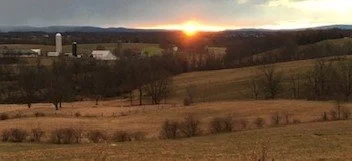More Light
Long before dogmas and faiths, feasts and holidays, humans have been observing the solstices marking the days with the most and least daylight. Megaliths and temples devoted to this celestial stalwart marking the halfway point around the sun twice a year. We further divided that by equinoxes. And that was long before Copernicus in the mid-sixteen century. Over 15,000 years before him, Australian Aboriginal people were recording solstices and astronomical events in their artwork. Petroglyphs marked by shadows still stand today. Who needed a calendar when you could just look at a shadow on a rock?
Galileo trashed much of the mysticism, astrology, mythology aspect of miracle once revered for the return of the sun. But before bursting that bubble, it was celebration time. The Norse partied for twelve days straight starting on the winter solstice. Two hundred years later young girls walked through the forests in Scandinavia with candles on their heads.
Native Americans were in the know with sites dating back 2000 years that are in perfect alignment with the sun on the shortest day of the year. The Egyptians beat them by 3000 years with their Karnak Temple as did the folks who at about the same time were building Stonehenge.
Practically every modern holiday tradition and trope can be traced back to some sort of solstice celebration, right down to our candles and Christmas trees. How many parties, dinners and cocktails will you have from now until after New Years Day? Baking cookies and breads? Many of our social calendars look downright Norse, don’t they?
While it’s fun to torch off a fire pit or snag one of those fancy French pastry Yule logs, did you realize you’re reaching back to the days of the Druids? What I want to know is how Santa Claus went from being a Turkish monk in the late third century to a man in a red suit we had our picture taken with at the local shopping mall each year.
If it’s one thing that hasn’t changed throughout the millennia, it’s the feasting. Let’s not tell the kids that they’re really celebrating Saint Nickolas’s death on December 6th. Feasting for the return of daylight is the anticipation of a coming year’s harvest. Plus, it was always a good method for using up perishable food and to pack on a few pounds for the lean, winter months. That practice has fallen out of vogue with the advent of modern agriculture and food preservation methods although our pants tend to get tighter the first week of January.
And feast we do! I’ve been watching how people feast for years, often facilitating it one way or another. Standing behind a couple discussing how many evenings they’d be entertaining in the coming weeks they put in their hefty cheese and caviar orders. How do I get on their guest list?
Ba humbug, though. When you’re the one slinging the hash, the holidays have to wait until everyone else had been fed. That’s the life of a farmer (and food service). Even without a farmers market to go to, ever single farm kid I’ve ever known had to do their morning chores before opening presents on Christmas day.
The best thing about winter solstice is between packing orders and putting out hay, there’s always time to look up at the stars, at the wonder of it all, and recognize how we all carry on the tradition.

